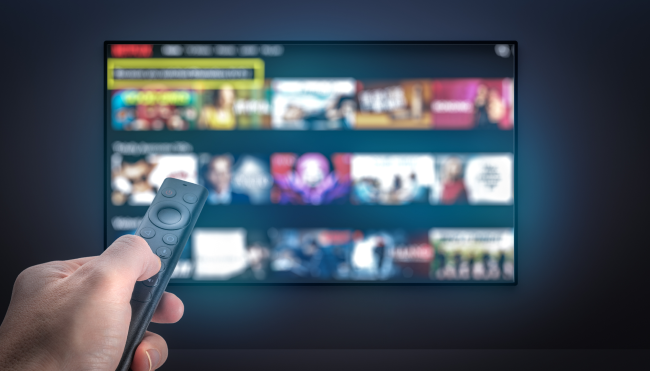- Why Amagi
-
Solutions
Contact UsBusinessWho We Serve
- Offerings
- AI
-
Resources
Contact UsINDUSTRY REPORTSAmagi FAST Report #15: The Power of Live Programming: A Catalyst for Streaming SuccessAugust 21, 2025Read More
-
Company
Contact UsNewsroomAmagi launches AI-powered Smart Scheduler to improve content programmingApril 3, 2025Read More
Blog
How to overcome the challenges of multi-channel programming
By Vijay P Sankar, Senior Manager, Product Marketing, Amagi - October 4, 2024
In the current media landscape, channel programming teams face immense pressure to keep viewers engaged for easier navigation and selection. The rise of Free Ad-supported Streaming Television (FAST) and the proliferation of channels have made efficiency and scalability critical. With leaner teams managing larger catalogs and more channels, the challenges are significant, especially when it’s critical to maintain creativity and meet tight deadlines.
Here’s how automation, efficient metadata management, and AI can help smaller programming teams navigate their roles better and be more productive.
How do programming teams thrive?
Increasing the scope of work with smaller teams
Modern programming teams are small but powerful, managing extensive content libraries and multiple channels. These teams handle everything from scheduling ideal programming for various channels to creating promos and marketing material. This is why an intuitive scheduling product that offers quick content discovery, innovative content organization, and assists with rights management is invaluable. Bottom line – it helps programmers efficiently schedule and scale across multiple channels.
Take Banijay Rights, for example, a global content producer and distributor that significantly improved its channel programming efficiency using Amagi PLANNER – our robust content scheduling platform. Adopting advanced scheduling tools streamlined their operations, resulting in a remarkable 80% increase in scheduling efficiency and enhanced operational efficiency.
Improving efficiency and scalability
Efficiency and scalability are the cornerstones of successful multi-channel programming. With increasing FAST and digital channels, programming teams benefit from solutions that enhance their scaling capacity without compromising quality. Solutions like Amagi PLANNER offer automation features for content scheduling and ad break management, drastically reducing the time required for these tasks. This allows channel managers to focus on more creative and strategic initiatives, ultimately fostering greater innovation and engagement.
Read: Elevating FAST programming using traditional broadcast best practices
For example, a U.S.- based media conglomerate initially adopted Amagi PLANNER to program a single channel. Leveraging automation features such as ad break automation, pattern-based scheduling, and other scheduling assists, they rapidly expanded their programming using PLANNER. As a result, a streamlined team could scale up to over 25 channels, achieving a remarkable 14x increase in efficiency.
Balancing creativity and scheduling timelines
Programming teams strive to strike a balance between fostering creativity and meeting the demands of short scheduling turnaround times. Manually scheduling the timelines is time-consuming and error-prone, impeding the creative process. By integrating automation such as pattern-based scheduling or ad break automation to schedule creative ad breaks, promos, and fillers, teams can reduce monotonous aspects of programming, freeing up time for creative pursuits.
At Amagi, we’ve seen at least 60% of the channels that use Amagi PLANNER schedule their content well in advance – sometimes more than three months ahead of the airing date. This proactive approach allows programmers to plan programs thoroughly, quickly make changes if necessary, schedule all necessary promotions, and better engage with platforms and other stakeholders, such as sponsors, to enhance monetization opportunities.
Learn: How FAST channels complement on-demand strategy
How do automation and AI improve the productivity of programming teams?
AI-assisted scheduling optimizes content discovery and enables programmers to curate the ideal content for the right time and audience. AI models can suggest optimal programming lineups by integrating viewership data, social trends, metadata, and rights information. These recommendations can then be refined by programming teams, ensuring a perfect blend of automation and human creativity for maximum viewer engagement.
With AI-assisted scheduling, programmers can efficiently sift through extensive content catalogs to identify the most suitable programs for their audience. This technology analyzes patterns in viewership data to understand what content resonates most with different demographics and time slots. By combining this data with detailed metadata and rights information, AI can propose programming schedules that meet audience preferences and comply with licensing agreements. For instance, Olympic programming, election coverage, football-themed content, etc.
Read: How to optimize linear channel scheduling and automation with AI
While the challenges of multi-channel programming exist, programming teams can embrace creativity, efficiency, and scalability through advanced scheduling software. Automation, efficient metadata management, and AI are critical in achieving these goals, enabling teams to deliver compelling content with precision and creativity.
As the industry continues to evolve, adopting these solutions will be essential for maintaining a competitive edge and meeting the demands of an ever-growing audience.
Want to learn more?
- To discover how Amagi PLANNER can help your channel programmers, get in touch with us
- Explore our glass-to-glass broadcast capabilities here
- Watch and follow our full webinar series, Amagi AIRTIME
Related Blogs
Get started
Increase revenue and reach with our Broadcast & Streaming solutions.
Cloud modernization. Streaming unification. Monetization. Marketplace.
 German
German French
French Spanish
Spanish Korean
Korean Japanese
Japanese Portuguese
Portuguese


